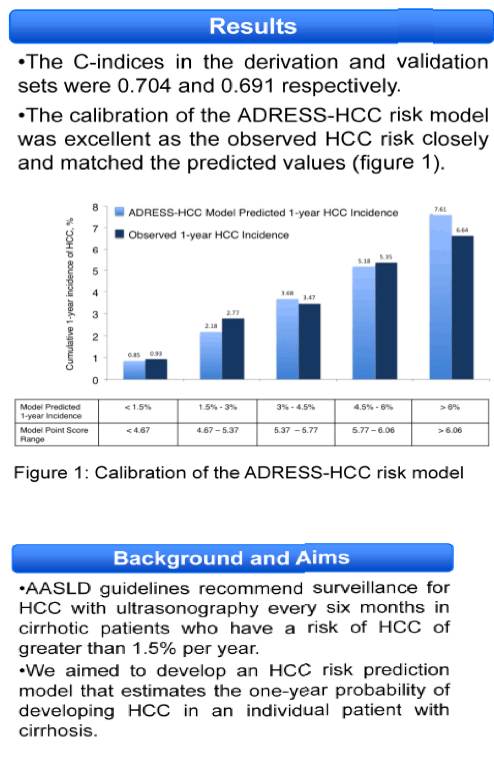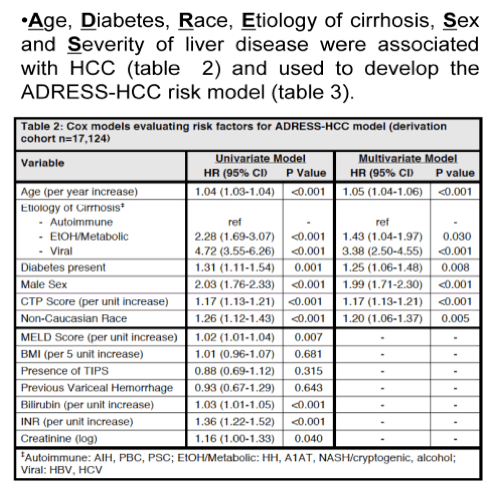 |
 |
 |
| |
Risk Prediction of Hepatocellular Carcinoma in Patients with Cirrhosis: The ADRESS-HCC Risk Model
|
| |
| |
Download the PDF here
Reported by Jules Levin
AASLD 2013 Nov 1-4 Wash DC
ABSTRACT:
Background: Surveillance for hepatocellular carcinoma (HCC) is recommended for cirrhotic patients with an HCC risk ≥ 1.5% per year. We aimed to develop an HCC risk prediction model thatestimates the one-year probability of developing HCC in an individual patient with cirrhosis.
Methods: Between March, 2002 and December, 2011 a cohort of 34,932 cirrhotic patients in the United Statesat risk of developing HCC was identified from a national database of patients with cirrhosis wait-listed for transplantation. Cox proportional hazards regression methods were used to develop and validate a risk prediction model for incident HCC from two different, non-random, subsets of the cohort. Model discrimination
was assessed using the C-index. Calibration was determined by comparing predicted and observed cumulative incidences of HCC at one year in the validation cohort.
Results: HCC developed in 1,960 (5.6%) during a median follow-up of 1.3 years (IQR 0.47 - 2.83 years). Six baseline clinical variables independently associated with the development of HCC were used to develop the ADRESS-HCC risk model. C-indices in the derivation and validation cohorts were 0.704 and 0.691 respectively. In the validation cohort, the predicted cumulative incidence of HCC by the ADRESS-HCC model closely matched the observed data. An ADRESS-HCC score of ≥ 4.67 identified patients meeting the AASLD criterion for HCC surveillance (≥ 1.5% per year).
Conclusions: The ADRESS-HCC risk model is an accurate tool for predicting the one-year risk of HCC among cirrhotic patients. It may be used to guide clinical decisions regarding HCC surveillance and to help inform national guidelines on HCC screening practices.


|
| |
|
 |
 |
|
|